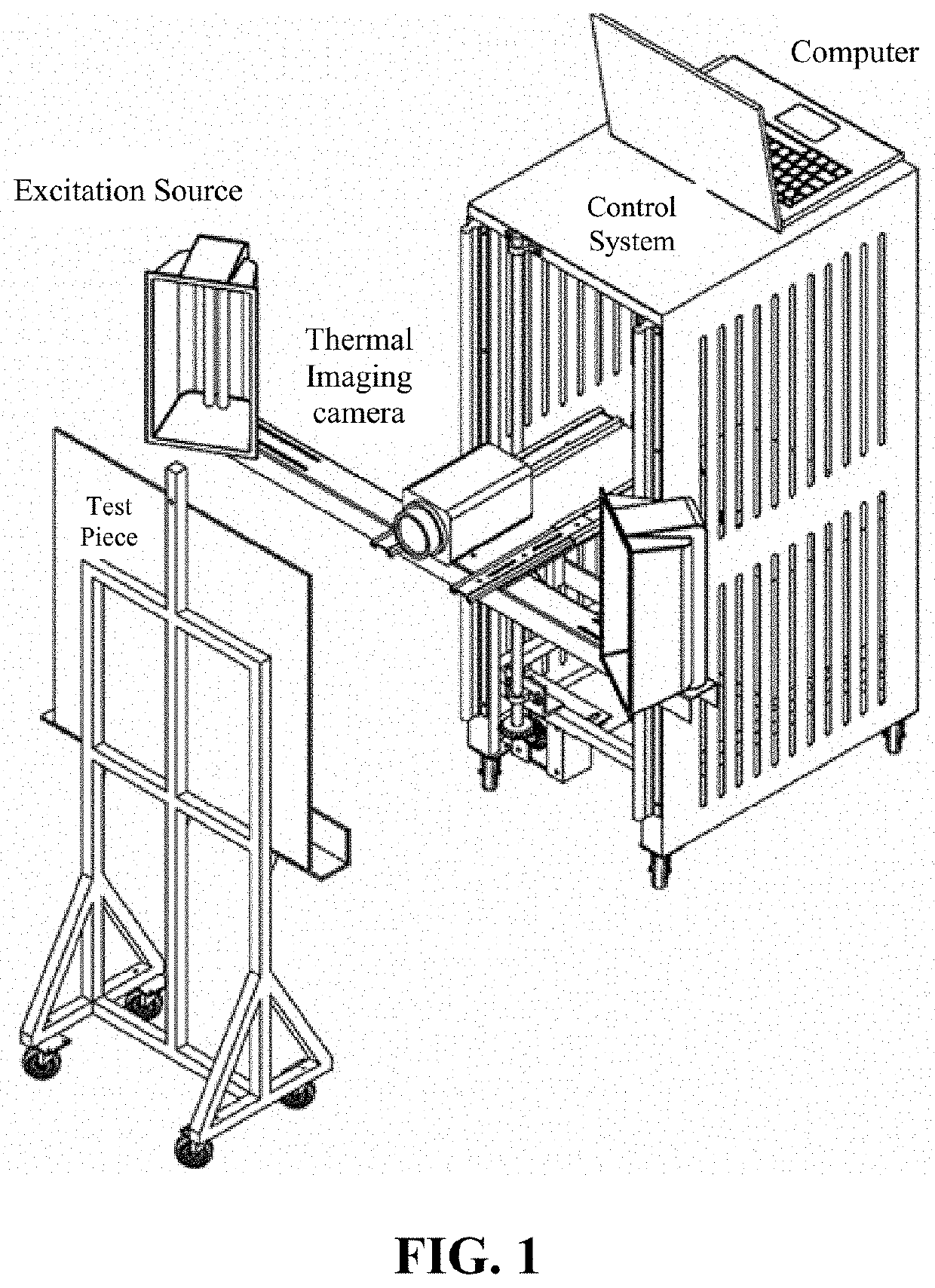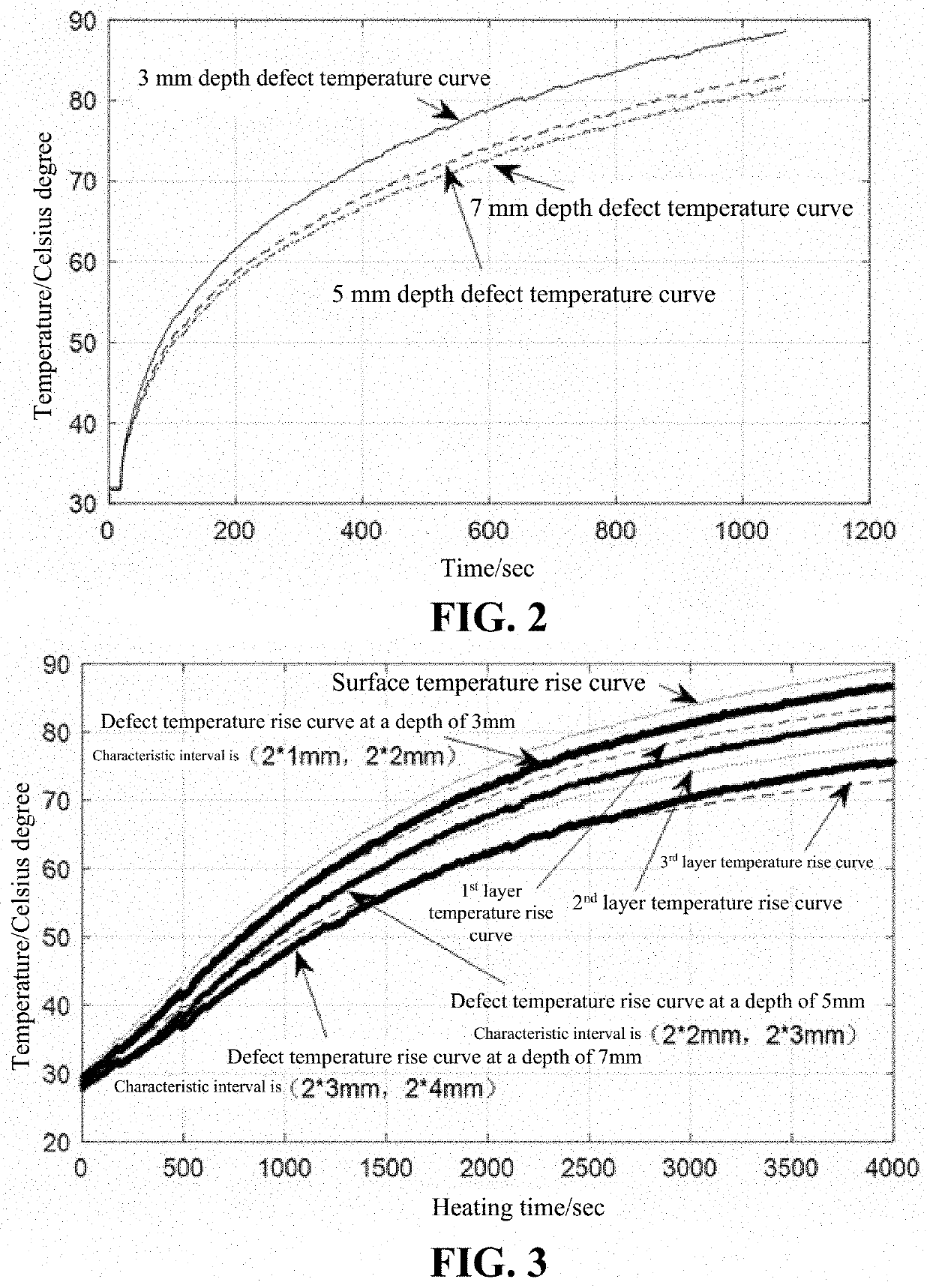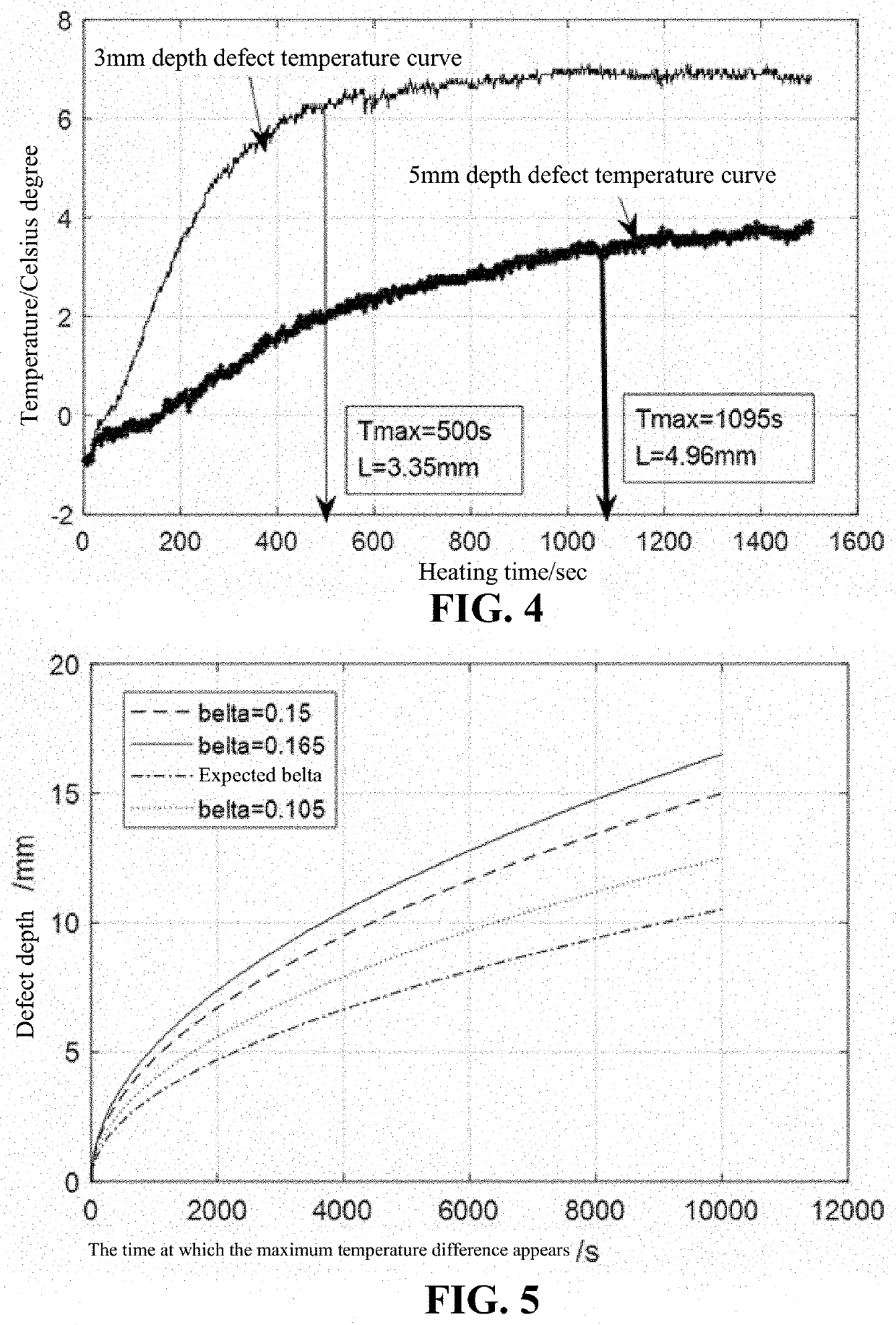Method of measuring depth of defects in large-scale wind turbine blade using infrared thermography
- Summary
- Abstract
- Description
- Claims
- Application Information
AI Technical Summary
Benefits of technology
Problems solved by technology
Method used
Image
Examples
Embodiment Construction
"d_n">[0032]The objects of this embodiment are fragments of a main beam of a certain wind turbine blade, with a total thickness of 30 mm, and a hole in the back cut by a milling machine to generate internal cavity defects with distances of 3 mm, 5 mm, and 7 mm from the surface, respectively. The method for measuring the depth of the internal defects of the blade in this embodiment is further described in detail below in conjunction with the drawings in the examples of the present invention.
[0033]The theory of the present invention is based on the one-dimensional heat conduction equation excited by a continuous heat source. When a semi-infinite uniform medium is subjected to a continuous heat source parallel to the surface, the heat conduction equation can be expressed as:
∂U∂t=α∂2U∂x2(1)
[0034]in the formula U is a surface temperature, t is time, α is a heat transfer coefficient, x is a depth.
[0035]As shown in FIG. 1, a halogen lamp is used as an irradiation source to continuously hea...
PUM
 Login to View More
Login to View More Abstract
Description
Claims
Application Information
 Login to View More
Login to View More - R&D
- Intellectual Property
- Life Sciences
- Materials
- Tech Scout
- Unparalleled Data Quality
- Higher Quality Content
- 60% Fewer Hallucinations
Browse by: Latest US Patents, China's latest patents, Technical Efficacy Thesaurus, Application Domain, Technology Topic, Popular Technical Reports.
© 2025 PatSnap. All rights reserved.Legal|Privacy policy|Modern Slavery Act Transparency Statement|Sitemap|About US| Contact US: help@patsnap.com



